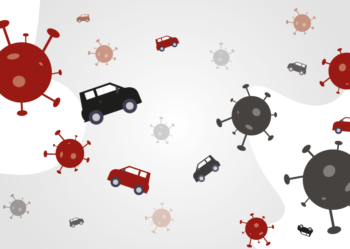Central and Eastern Europe Press Review – May 2024

Discover the economic and ecological challenges in Central and Eastern Europe. Our press review includes news from various sectors. Check it out!
Central Europe: From European industry to China’s gateway
The enlargement of the European Union towards central and eastern Europe has led to a significant shift of European industry eastwards. This expansion allowed new members to maintain a high share of their manufacturing industry by providing a skilled labor force at lower costs.
In addition, these countries have strengthened their competitiveness by reducing public spending and compressing domestic demand, thus favoring exports. Between 2005 and 2015, modern factories in Central and Eastern Europe became sites of pure offshoring, increasing vehicle production from 1.5 million in 2000 to 3.6 million in 2022. At the same time, production in France fell, going from 3.3 million to 1.4 million vehicles.
Surely faced with geopolitical and logistical challenges, these countries now benefit from a relocation of Chinese production. A report from the Polish Institute of Economics predicts that this relocation could bring 22 billion dollars per year to these regions of Eastern Europe. Having become a springboard for China, they attract investments such as that of BYD Auto in Hungary. The latter are strengthening their strategic position despite political regimes being less attentive to democratic issues.
The rise of Chinese automobile brands in Poland
In 2024, two major Chinese automobile brands will enter the Polish market. According to IBRM Samar, 533 Chinese vehicles were registered in Poland at the start of the year. In addition, this figure could increase quickly with the arrival of new manufacturers.
The growth of Chinese cars in Europe, particularly electric vehicles, is due to improved quality, allowing them to compete with European brands. Their market share in Europe could almost double by 2025.
However, thanks to government subsidies, lower production costs and economies of scale, Chinese manufacturers offer prices around 20% lower than those of European brands.
This growth worries European manufacturers, especially in Germany and France. The European Commission is considering increasing customs duties on Chinese electric vehicles, currently 10%, to reduce this competition.
For a successful transformation of the Slovak automotive industry
The NEWMATEC conference, organized annually by the Slovak Automotive Industry Association, many topics were adressed. That is to say electromobility, competitiveness of the Slovak and European automotive industry, fight for talent, and sustainability requirements.
The success of the transformation of the automobile industry depends on improving its global competitiveness.
Aleksandr Matušek, President of ZAP, emphasized the need to improve the business environment and ensure the future development of the industry.
Moreover, former Finance Minister Ivan Mikloš spoke about the challenges of European competitiveness in the face of Chinese and American industries, notably the absence of a single market. Wolfram Kirchert of Volkswagen Slovakia also highlighted the challenges posed by competition from Chinese cars and called for a policy support framework to strengthen the European industry.
Growth of the semiconductor sector thanks to AI in Slovakia
The semiconductor sector anticipates growth, driven by artificial intelligence (AI). Currently, automobiles are the main source of revenue for the sector. The growing demand for electric cars, rich in semiconductors, supports this trend. However, AI could soon overtake automotive as the industry’s growth engine. Indeed, it is becoming a major strategic priority, alongside a skilled workforce and a fluid supply chain.
The KPMG LLP and Global Semiconductor Alliance (GSA) survey of 172 semiconductor executives found that 85% expect revenue to increase this year.
It is important to note that the lack of talent remains the main risk for this industry, emphasizing the priority on the development and retention of a qualified workforce.
Decarbonization of the steel industry: a crucial challenge for Slovakia
First, the European Union is aiming for carbon neutrality by 2050, with a 55% reduction in greenhouse gas emissions by 2030 compared to 1990.
Therefore, Slovakia, like all member states, must adapt its industry to achieve this goal. Particularly the steel sector which is responsible for a significant part of emissions. For example, the U.S. Steel Košice steel plant is responsible for a fifth of national emissions.
Juraj Varga, the union representative at the factory, emphasizes that despite promises of decarbonization, no significant investments have been made. Employees express frustration with the lack of progress. The decarbonization of the factory, was estimated at 1.4 billion euros and still awaiting funding, despite aid of 600 million euros from the European Union. Decarbonization remains costly and complex.
In Košice, residents remember the days when intense pollution was common before the factory complied with European standards in the 2000s. Successful decarbonization of the factory could reduce national emissions by 14%. However, residents and environmentalists, like Zuzanna Kupcova, often denounce the greenwashing of big companies and demand concrete actions.
However, concerns about industrial competitiveness in the face of the costs of decarbonization are emerging among leaders. They are calling for a review of the green transition objectives so as not to compromise the local economy.
Potential acquisition by Nippon Steel
Consequently, some experts imagine a future where the region would turn to less polluting and more innovative industries. The potential takeover by Nippon Steel is seen as an opportunity for technological and ecological revitalization.
Radislav Trnka, president of the Košice region, sees this acquisition as a chance for modernization and the integration of green technologies, particularly the use of hydrogen. Therefore, the Košice region could become a model for industrial decarbonization.
The decarbonization of the U.S. Steel plant in Košice represents a major challenge for Slovakia in the fight against climate change. The financial and technical challenges are considerable. Nevertheless the potential for ecological and economic transformation could serve as an example for other industrial regions in Europe.
Who are we?
SNECI is the global leader in improving industrial and commercial performance internationally.
With roots in the automotive industry, we apply our expertise across many other sectors such as pharmaceuticals, aeronautics, energy, and luxury.
Finally, check our website sneci.com for more info or contact us directly!





